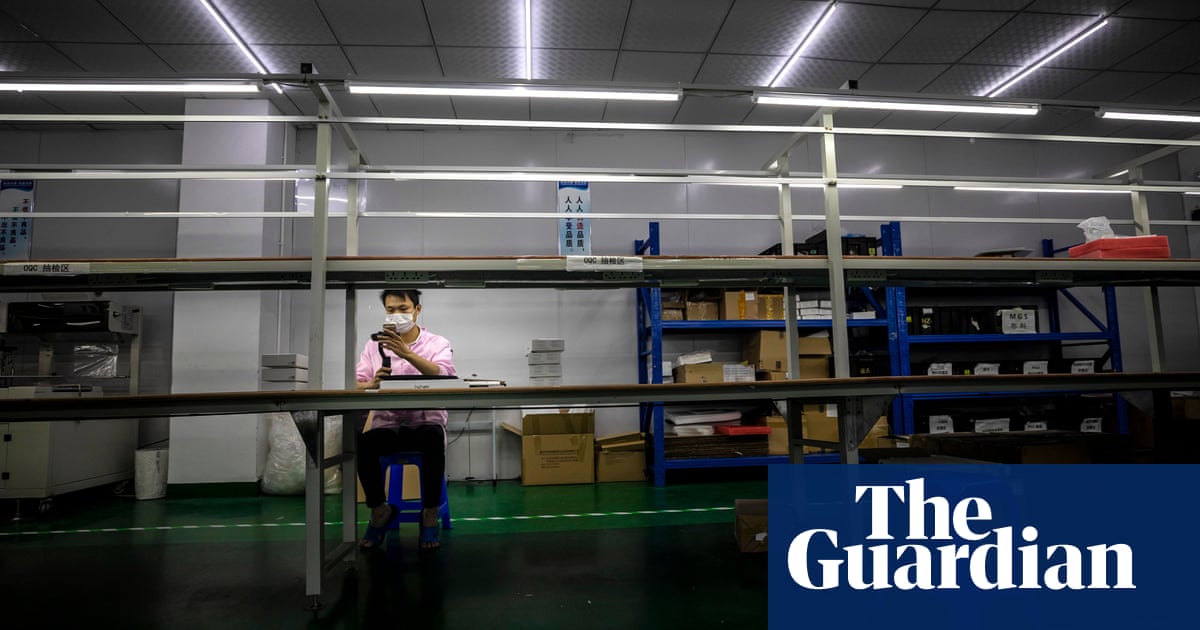Coronavirus deals China’s economy a ‘bigger blow than global financial crisis’
Factory production plummets at the fastest pace seen in three decades, as first-quarter figures emerge

China has suffered even deeper economic damage from the coronavirus pandemic than predicted, with figures released by the National Bureau of Statistics (NBS) on Monday showing factory production inside the country dropped at the fastest pace seen in three decades.
Financial analysts have said the economic impact of the pandemic may have cut Chinas growth in half during the first quarter.
Industrial output fell 13.5% in January-February, compared with 2019, which ING economist Iris Pang told AFP was the first contraction since January 1990, when industrial production shrank 21.1%.
Year-on-year, fixed asset investment fell 24.5%, private sector investment fell 26.4%, and retail sales shrank 20.5%.
Judging by the data, the shock to Chinas economic activity from the coronavirus epidemic is greater than the global financial crisis, Zhang Yi, chief economist at Zhonghai Shengrong Capital Management told Reuters.
These data suggest a small contraction in the first-quarter economy is a high probability event. Government policies would need to be focused on preventing large-scale bankruptcies and unemployment.
The figures came as global deaths and infections from the coronavirus surpassed those inside China for the first time.
On Monday the government injected $14.3bn into the financial system with the offer of one-year medium-term lending facility loans. The Central Bank also said it was cutting the amount of cash a bank must hold in reserve.
Chinas jobless rate rose to 6.2% in February, compared with 5.2% in December and the highest since the official records were published.
Hong Kongs unemployment figures were also the highest in three years at 3.4%, and predicted to get worse, financial secretary Paul Chan said. In construction it rose to 5.7%, and 5.2% in tourism.
New figures on Februarys tourism numbers also revealed Hong Kong received the same number of visitors in a month that it usually saw in one day last year.
Januarys figures were already low, with a drop of 52.7% on 2019.
From early February, Hong Kong implemented strict measures to respond to the outbreak, including closing most borders with mainland China, whose residents usually comprise around 80% of visitors.
Almost 50 countries around the world have established travel warnings and restrictions relating to China since the start of the outbreak, and more than half include Hong Kong.
The Shanghai-based infectious disease expert Zhang Wenhong, who is something of an online celebrity for his straight talking, said China had now gone through the darkest part of the crisis but he did not think the epidemic would be over by the summer.
As the number of cases outside China overtakes those within, there were fears of a second wave brought in by visitors from the west.
Late on Sunday, Beijing announced that anyone arriving to the city on an international flight would be sent to a quarantine facility, and required to cover the cost themselves. Previously, arrivals were able to self-quarantine at home.
Hong Kong, also fearful of new imported cases, added the US, Britain and Ireland to its red alert list on Sunday, joining Korea, the Hokkaido region of Japan, European Schengen countries, Egypt and Iran.
From midnight on 19 March, Hong Kong authorities will issue compulsory home quarantine orders on any arrival who has been to Ireland, the UK, the US or Egypt in the past 14 days.
In the past two weeks, 26 of the 46 new cases in Hong Kong were confirmed to be imported.
